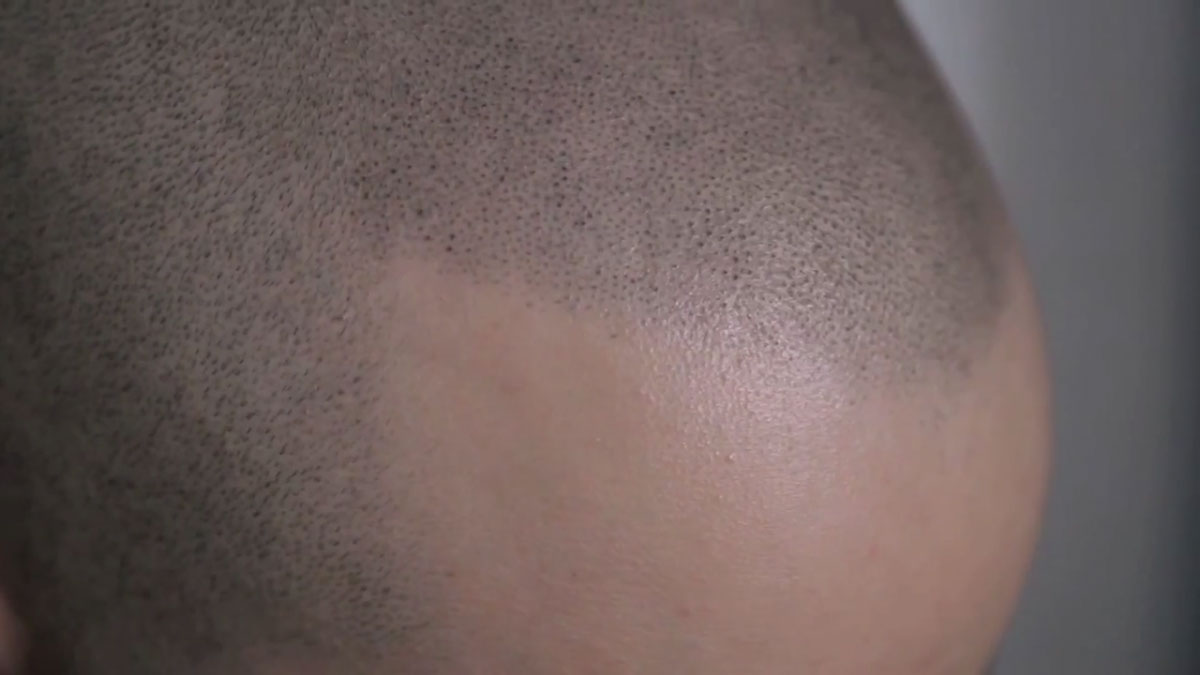Recently a number of clients have asked about tricopigmentation, and how it differs from scalp micropigmentation. The crucial questions of course are what differentiates the two procedures, and which is most suitable for your specific requirements.
Tricopigmentation is a term that originated in Europe, and is now used in the United States and some other countries like the United Kingdom.

A high quality permanent scalp micropigmentation treatment as shown above is safer, more cost-effective and requires less ongoing maintenance than the so-called ‘safe’ option of temporary tricopigmentation.
In essence, tricopigmentation is a temporary version of scalp micropigmentation that uses a similar technique, but with different pigments and different longevity expectations. Depending on the specific case, a tricopigmentation treatment usually lasts 6-18 months before it starts to fade. The usual strategy is to re-apply the treatment every year or so, or to use the temporary option as a precursor or ‘test’ treatment prior to taking the permanent option.
Scalp micropigmentation on the other hand, is a permanent solution for hair loss. The pigments are classed as permanent, and the treatment overall is intended to be kept for life, or at least on a long term basis. Short touch-up treatments are required every 5-6 years or so, but usually only last a couple of hours. Without touch-ups, pigments are still likely to be visibly present in most clients for more than 20 years.
Permanent scalp micropigmentation is safer than temporary tricopigmentation for two primary reasons:
Ease of removal / reversal
Permanent pigments can be removed in their entirety using laser treatment. One session eradicates almost all of the pigment, whilst a second session is usually required to mop up any pigment deposits were missed. This applies to a professionally applied treatment. Badly made treatments using tattoo inks take much longer.
Temporary pigments, as used in tricopigmentation, cannot usually be removed by laser as they get very hot and can burn the skin. They will eventually fade on their own of course, however a complete removal via normal fading can take a year or more.
In other words, if there is a problem or the customer changes their mind, permanent scalp micropigmentation is entirely reversible, whilst temporary tricopigmentation removal is fraught with problems, and is usually not possible.
Layering of pigments
Around 6-18 months after a tricopigmentation procedure, the pigments start to fade. If the client wants to keep the look, more pigment must be applied. This can be problematic because the original pigments will take more than a year in most cases to fade completely. Adding more and more pigment to what is already quite a fresh treatment can result in a solid helmet-like appearance.
As scalp micropigmentation is permanent, this constant layering of pigment is not necessary, therefore a competent practitioner can avoid this issue altogether.
